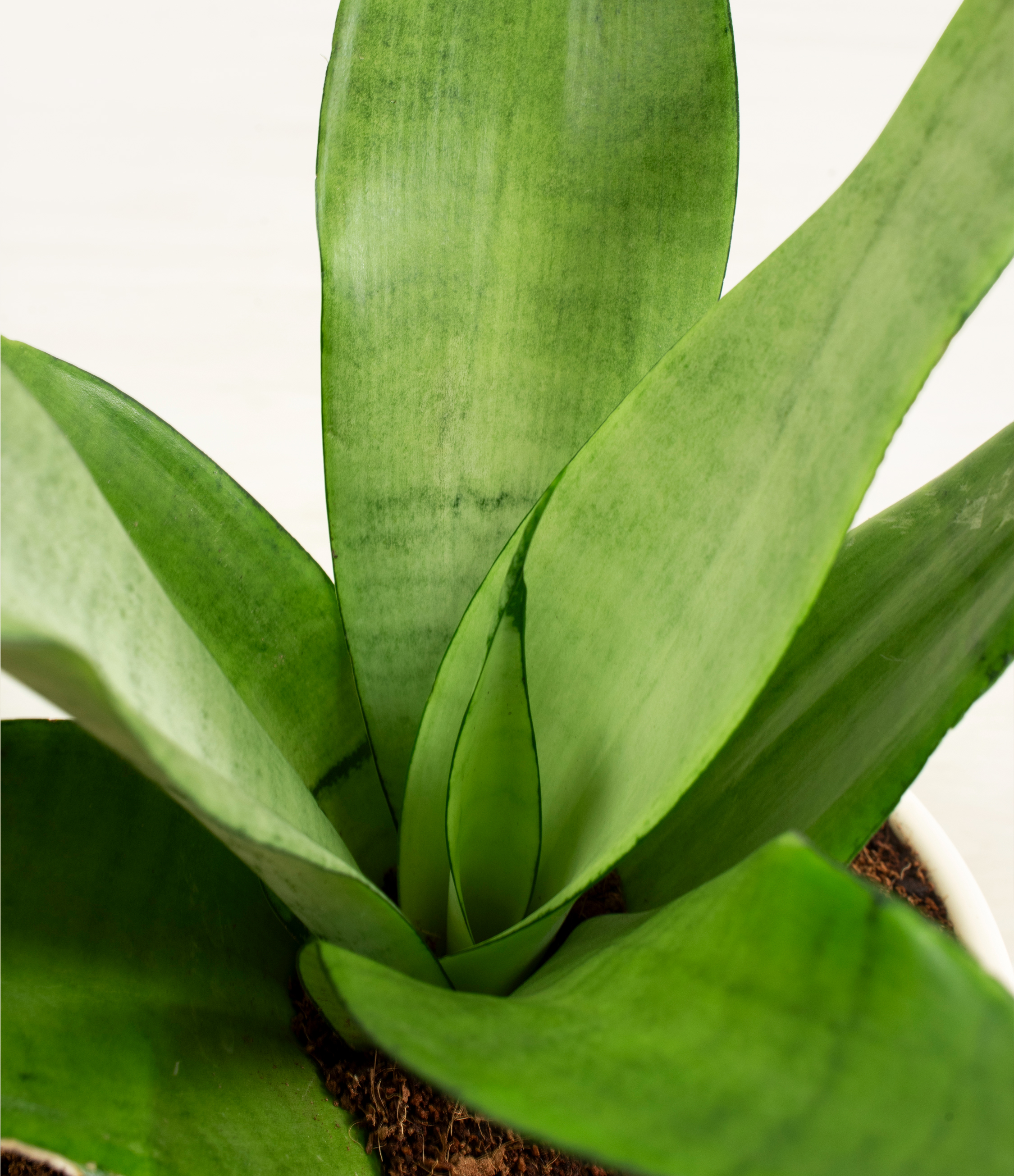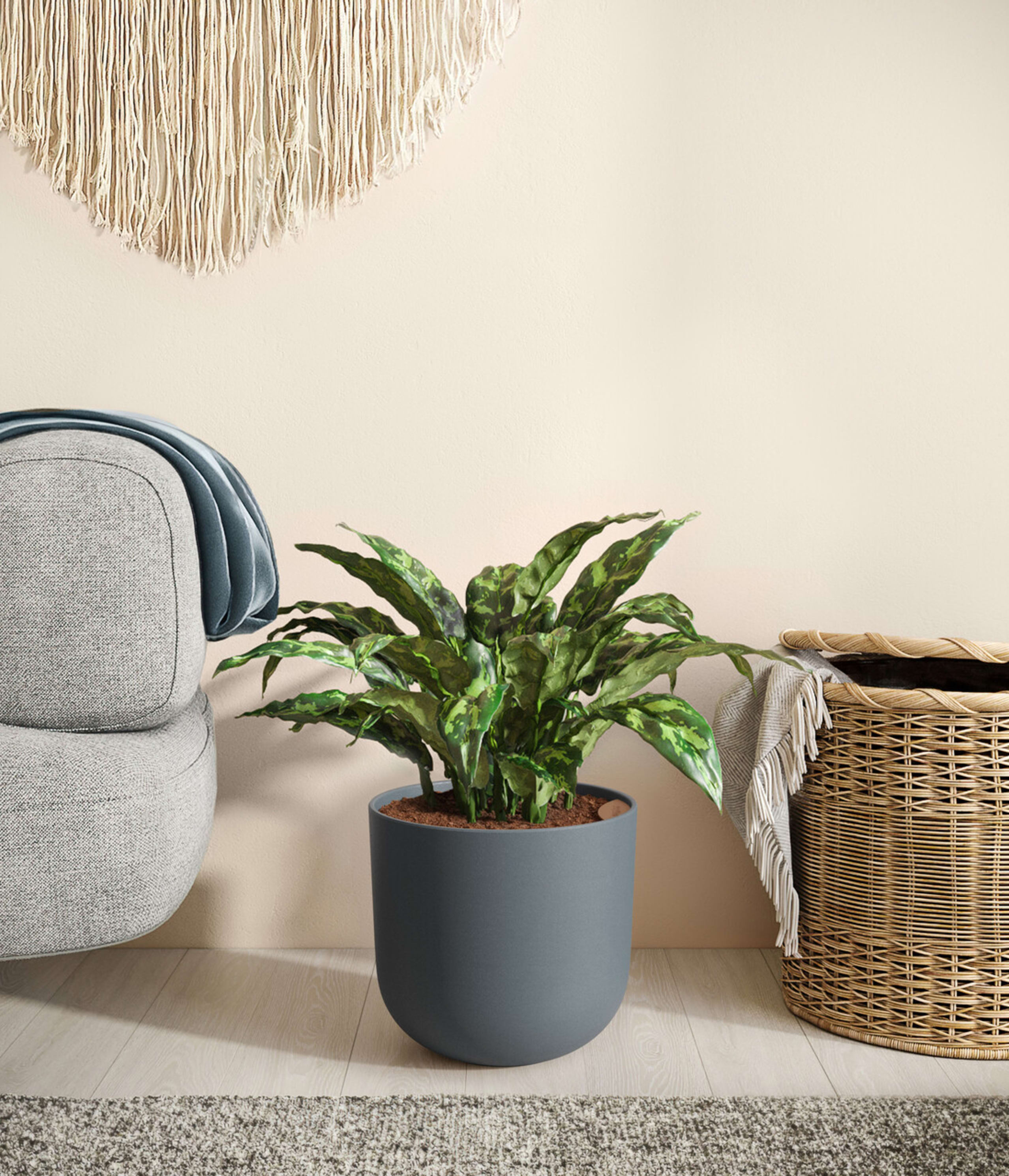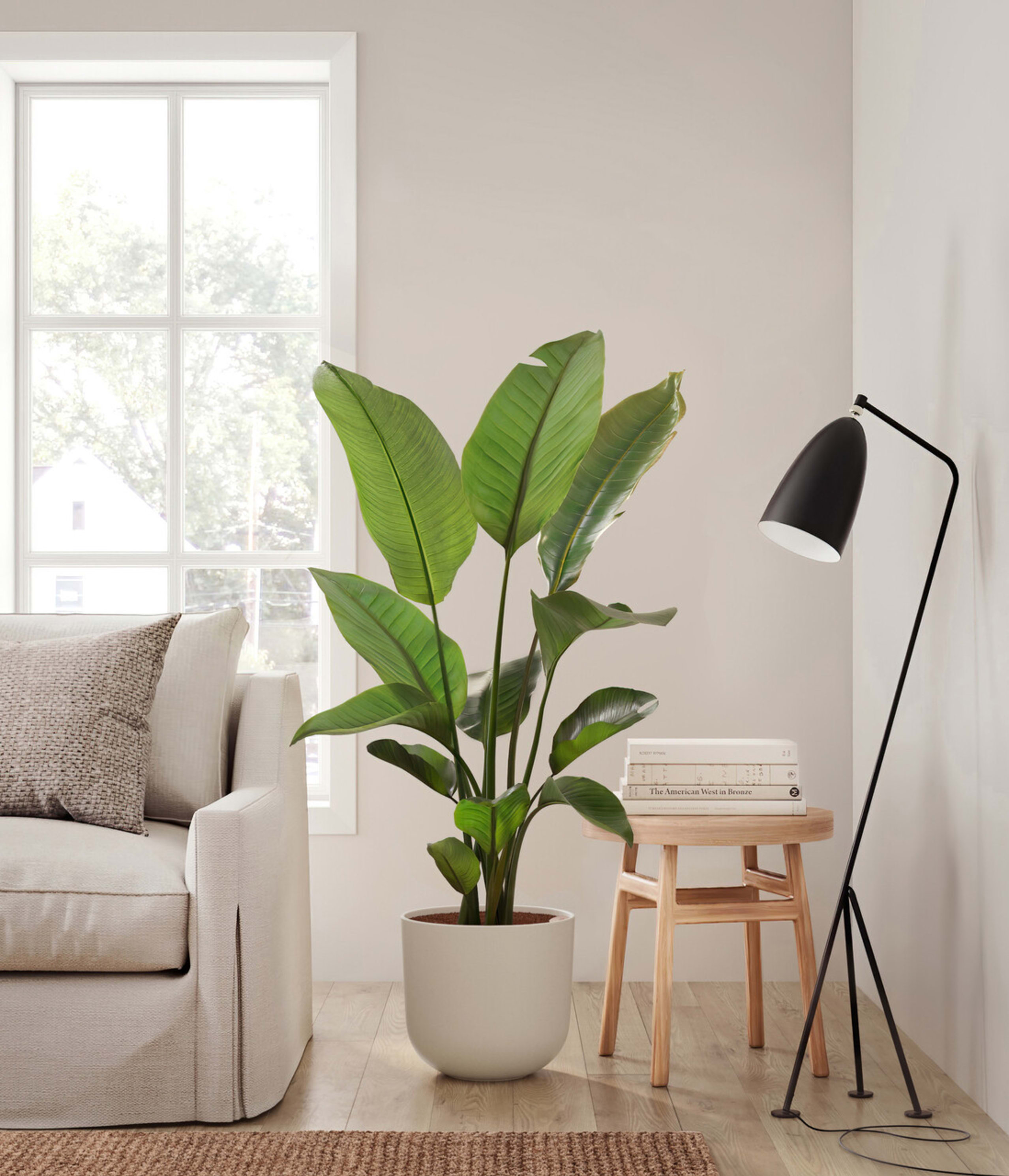How to Care for Sansevieria Moonshine
About Sansevieria Moonshine
Native to the tropical regions of West Africa, the Sansevieria Moonshine, a variation of the traditional Snake Plant, boasts an impressive silvery-green shade on its broad, upright leaves. This cultivar is not only striking in its appearance but is also renowned for its adaptability and air-purifying properties. The luminous quality of its foliage adds a touch of brightness to any space, making it a favored choice for interior design and clean air benefits.
Other common names
- Moonshine Snake Plant
- Drunken Mother-in-Law's Tongue
- Silver Snake Plant
- Sansevieria trifasciata 'Moonshine'
- Dracaena trifasciata 'Moonshine'
- Saint George's sword
How Often Should I Water My Sansevieria Moonshine?
With easyplant, watering your Sansevieria Moonshine becomes incredibly straightforward. Simply check the easyplant reservoir once every two months, and when you find it empty with the soil dry, just fill it up, and you're all set!
Sansevieria Moonshine Plant Light Needs
Sansevieria Moonshine grows best in a well lit space with bright indirect sunlight, and can adapt to both direct sunlight and low light. Avoid placing it in spaces without natural sunlight.
Sansevieria Moonshine thrives primarily in areas bathed in bright, indirect sunlight. Its adaptive nature means it can withstand periods of direct sunlight, though it's essential to monitor for signs of sunburn or discoloration on the leaves. Additionally, while the Moonshine variant can tolerate low light conditions better than some other plants, it's not ideal for its long-term health and vibrancy. Prolonged exposure to low light might cause the plant to lose some of its distinctive silvery-grey coloring and can lead to leggy growth as it stretches towards a light source. It's highly advised to avoid placing it in spaces completely devoid of natural sunlight, as these conditions can stifle its growth and overall vitality.
Moonshine Sansevieria Plant Care
With the right tools and care, your Sansevieria Moonshine can become the crowning jewel of your indoor garden. For those equipped with an easyplant, you'll find much of the care process delightfully straightforward. But, whether you have the convenience of easyplant or not, the adaptability of Sansevieria Moonshine is its true charm. Begin by regularly wiping down the Moonshine's silvery-grey leaves with a damp cloth. This not only maintains their lustrous appearance but also helps with their photosynthesis. For those wanting to ensure the plant's uniform growth and captivating statuesque posture, consider rotating the pot by a ¼ turn a month. It’s a simple action, ensuring all sides of your Moonshine receive an even share of light and preventing any unintentional leaning. Beneath its tough exterior, the Moonshine is all heart, particularly at its roots. If you don’t own an easyplant, emphasize optimal drainage for its pot and consider gravitating towards a well-aerating soil mix, like those tailored for cacti or succulents.
How Big Do Sansevieria Plants Grow?
Sansevieria Moonshine is known for its vertical growth, with tall and slender sword-like leaves stretching upwards. Indoors, under optimal conditions, this variant of the snake plant can reach heights of up to 3-4 feet. Its growth rate can be around an inch per month, which translates to about 12 inches per year, influenced by factors like light exposure, watering frequency, and soil quality.
Temperature & Humidity
Sansevieria Moonshine prefers temperatures between 70°F to 90°F. While it doesn't crave high humidity due to its desert origins, maintaining average household humidity should suffice for its comfort.
Are Sansevierias Toxic for Pets & Kids?
Sansevieria may be moderately toxic if ingested, so be sure to keep away from curious children and pets, like cats and dogs.
Troubleshooting Common Problems with Sansevieria Moonshine
If you notice the leaves of your Sansevieria Moonshine beginning to yellow, it may indicate overwatering. It's essential to ensure that the water reservoir isn't flooded and that the soil isn't overly moist. If you don’t own an easyplant pot, make sure that the soil is completely dry before watering and that your pot has proper drainage holes. If you notice browning or crisping leaf tips, it might hint at a need for increased humidity or possible under-watering. If you notice leaves starting to lose their distinct silvery-green hue, consider adjusting the plant's light exposure. A more vibrant position might help the Sansevieria Moonshine regain its characteristic coloration. Lastly, if your Sansevieria Moonshine's growth seems stunted or if it appears unhealthy, check for pests such as mealybugs or spider mites, which could be inhibiting its growth. These pests can be treated with insecticidal soap or neem oil. Keeping your Sansevieria Moonshine clean by wiping its leaves can deter pests and help it remain in peak condition.
Frequently Asked Questions about Sansevieria Moonshine Plant
- Is Moonshine Sansevieria rare?
Sansevieria Moonshine, with its distinctive silvery-green broad leaves, is a unique variety of Snake Plant but not considered rare. It's appreciated for its aesthetic allure and low-maintenance nature, making it a popular choice for interior design and clean air benefits.
- How big does Sansevieria Moonshine get?
Sansevieria Moonshine is known for its vertical growth, with tall and slender sword-like leaves that can stretch upwards. Indoors, under optimal conditions, this variant of the snake plant can reach heights of up to 3-4 feet. Its growth rate can be around an inch per month, which translates to about 12 inches per year, influenced by factors like light exposure, watering frequency, and soil quality.
- How do you take care of Sansevieria Moonshine?
For easyplant users, simply fill the water reservoir once every two months. For those without an easyplant system, water when the soil completely dries out. Regularly wiping the leaves with a damp cloth will help maintain their lustrous appearance. Sansevieria Moonshine thrives in well-lit spaces with bright indirect sunlight but can adapt to both direct sunlight and low light conditions.
- Is Sansevieria Moonshine toxic?
Yes, Sansevieria Moonshine may be moderately toxic if ingested. It's important to keep it away from curious children and pets like cats and dogs to prevent any potential health issues.

 Small Plants
Small Plants Medium Plants
Medium Plants Plants Collections
Plants Collections Large Plants
Large Plants Huge Plants
Huge Plants